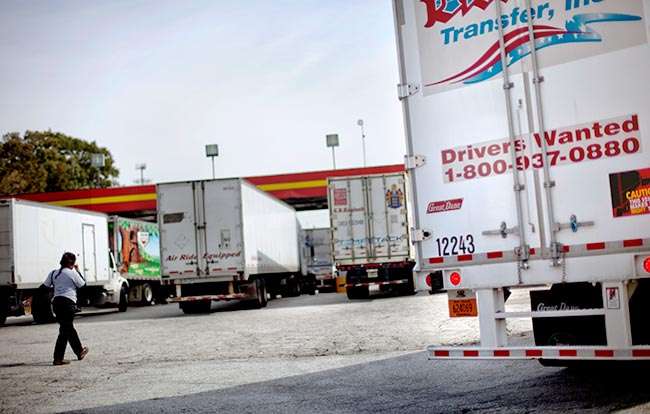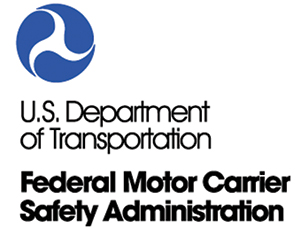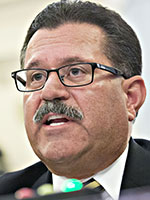Senior Reporter
ATA: Trucking Industry Was Short More Than 60,000 Drivers in Meeting Demand at End of 2018

[Stay on top of transportation news: Get TTNews in your inbox.]
More than 60,000 truck drivers were needed by the end of last year — the most ever — to meet the country’s demands for freight services, according to a new driver shortage report by American Trucking Associations.
“Over the past 15 years, we’ve watched the shortage rise and fall with economic trends, but it ballooned last year to the highest level we’ve seen to date,” said Bob Costello, chief economist for the federation.

Costello
Costello said that last year’s shortage hit a high of 60,800 drivers, up from 50,700 in 2017, an increase of nearly 20%.
“We’re forecasting that this year, the shortage will actually improve slightly, just a little bit as freight remains soft,” Costello said. “We did attract more people to the industry, but it’s not improving significantly.”
The increase in the driver shortage should be a “warning” to carriers, shippers and policymakers, he added, because “if conditions don’t change substantively, our industry could be short just over 100,000 drivers in five years and 160,000 drivers in 2028.”
To meet the nation’s freight demand, the report said the industry will need to hire 1.1 million new truck drivers over the next decade — an average of 110,000 per year — to replace retiring drivers and keep up with growth in the economy.
“The combination of a surging freight economy and carriers’ need for qualified drivers could severely disrupt the supply chain,” Costello warned.
While the report, made public on July 24, explains that the factors that contribute to the shortage cover the entire industry, the bulk of the shortfall is in the over-the-road for-hire truckload market, where drivers spend days or weeks away from their families.
ATA's 2019 Driver Short... by Transport Topics on Scribd
“That’s where the vast majority of this shortage lies,” Costello said during a telephone news conference. “The U.S. Department of Labor says that there are about 3.5 million total truck drivers, but that’s including all types of truck equipment. There are 1.8 million heavy and tractor-trailer drivers, but we’re even talking about a smaller subset of truck drivers than that.”
There are between 500,000 to 600,000 for-hire over-the-road truckload drivers, estimates ATA.
The primary factors for the increase in 2018 included an aging driver population entering retirement, increases in freight volumes and competition from other blue-collar careers.
The report said trucking needs to find ways to attract more and younger drivers. Currently, the average age of an over-the-road driver is 46, while the average age of a new drivers being trained is 35, according to ATA.
To retain and recruit drivers, the report said the industry needs to remove barriers for younger drivers to begin careers, attract more demographic diversity, ease transition for veterans, increase pay, address such lifestyle factors as giving drivers more time at home, and reduce wait times at shipper facilities.

The report said the industry has historically struggled to attract all segments of the population as just 6.6% of truck drivers in 2018 were women. This percentage hasn’t changed much historically, ranging from 4.5% to 6.6% over the past 18 years. Last year, 40.4% of drivers were minorities, which has jumped 13.8% from 26.6% in 2001.
Meanwhile, the Federal Motor Carrier Safety Administration announced (the same day ATA published its report) a proposed rule that would allow commercial driver license applicants to take the required general and specialized knowledge tests in a state other than their official residence.
Previously, applicants could only take the exams in the state where they live.
But under the proposed rule, states that elect to offer the tests to out-of-state applicants are to send the results to regulators in the state where the applicant resides, and they must be accepted.

Martinez
“Reducing burdens and expenses on CDL applicants has the potential to increase the number of available drivers,” FMCSA Administrator Ray Martinez said in a statement. “This proposal offers common-sense regulatory changes that will help CDL applicants, without compromising safety.”
Last month, FMCSA began an effort to court military veterans, accepting applications for a pilot program that would allow people between the ages of 18 and 20 who have the U.S. military equivalent of a commercial driver license to operate trucks in interstate commerce. The program, slated to run for up to three years, is meant to help veterans and reservists find jobs in trucking. Current federal law does not allow this age group to drive Class 8 commercial motor vehicles across state lines.
In mid-May, the agency also announced it is seeking public comment on a potential pilot program that would allow drivers between the ages of 18 and 20 to operate trucks interstate.
Staff reporter Eleanor Lamb contributed to this story.




